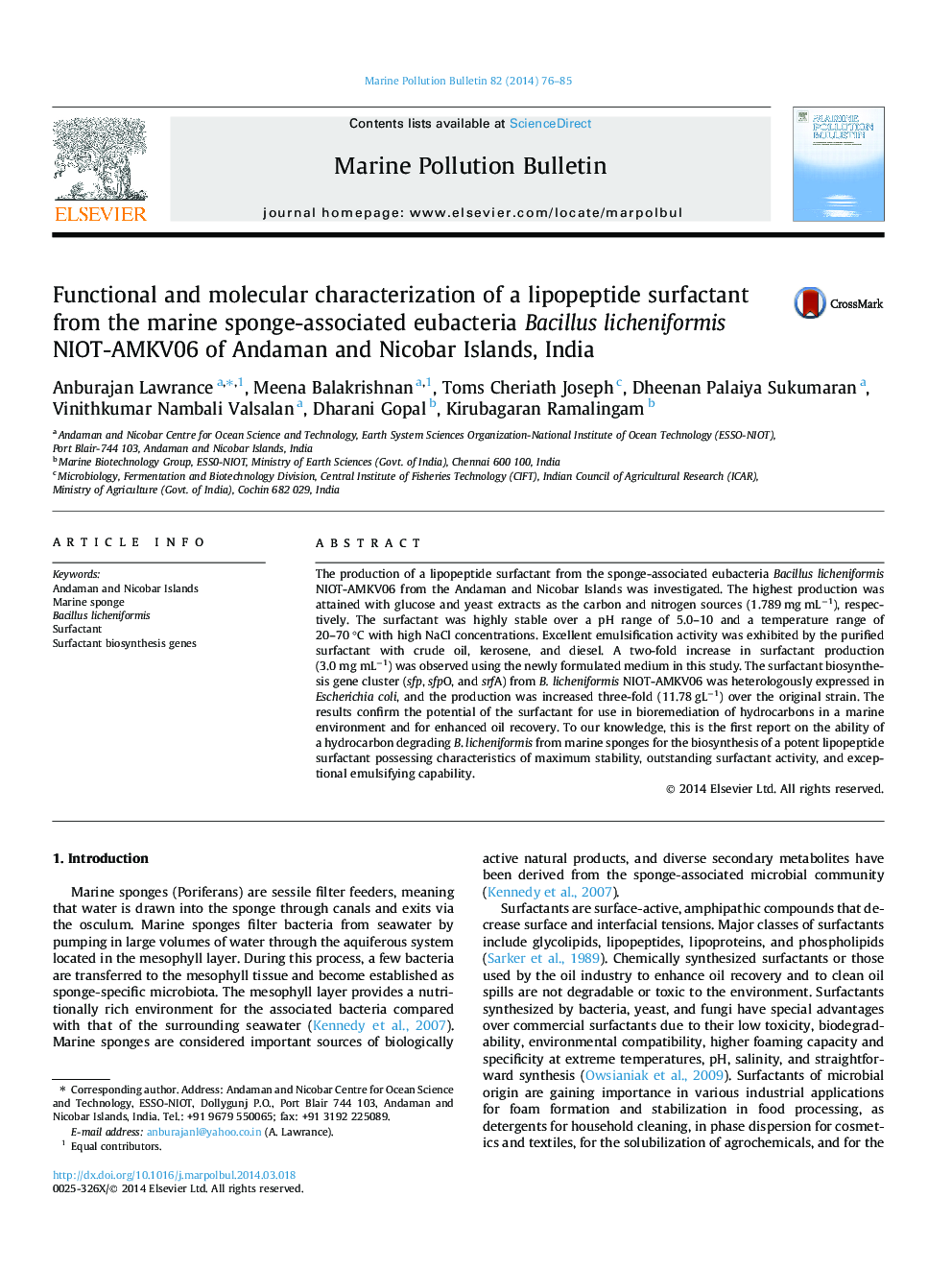| Article ID | Journal | Published Year | Pages | File Type |
|---|---|---|---|---|
| 6358391 | Marine Pollution Bulletin | 2014 | 10 Pages |
Abstract
The production of a lipopeptide surfactant from the sponge-associated eubacteria Bacillus licheniformis NIOT-AMKV06 from the Andaman and Nicobar Islands was investigated. The highest production was attained with glucose and yeast extracts as the carbon and nitrogen sources (1.789 mg mLâ1), respectively. The surfactant was highly stable over a pH range of 5.0-10 and a temperature range of 20-70 °C with high NaCl concentrations. Excellent emulsification activity was exhibited by the purified surfactant with crude oil, kerosene, and diesel. A two-fold increase in surfactant production (3.0 mg mLâ1) was observed using the newly formulated medium in this study. The surfactant biosynthesis gene cluster (sfp, sfpO, and srfA) from B. licheniformis NIOT-AMKV06 was heterologously expressed in Escherichia coli, and the production was increased three-fold (11.78 gLâ1) over the original strain. The results confirm the potential of the surfactant for use in bioremediation of hydrocarbons in a marine environment and for enhanced oil recovery. To our knowledge, this is the first report on the ability of a hydrocarbon degrading B. licheniformis from marine sponges for the biosynthesis of a potent lipopeptide surfactant possessing characteristics of maximum stability, outstanding surfactant activity, and exceptional emulsifying capability.
Related Topics
Physical Sciences and Engineering
Earth and Planetary Sciences
Oceanography
Authors
Anburajan Lawrance, Meena Balakrishnan, Toms Cheriath Joseph, Dheenan Palaiya Sukumaran, Vinithkumar Nambali Valsalan, Dharani Gopal, Kirubagaran Ramalingam,
